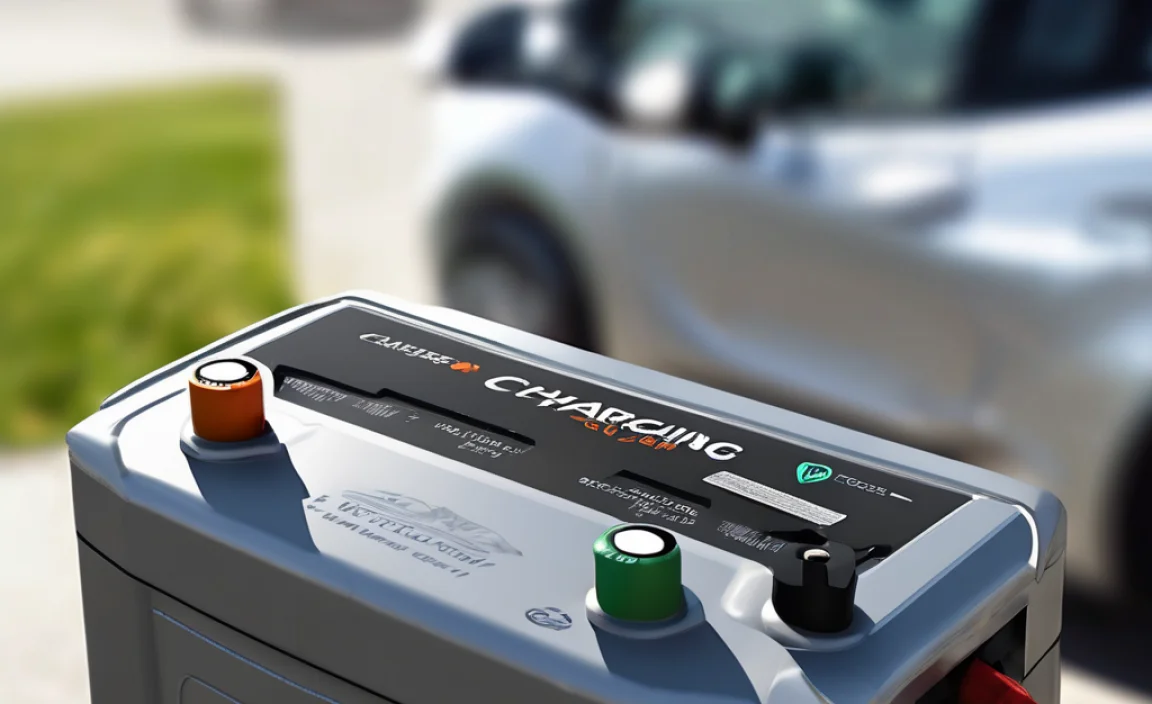Golf cart battery acid is a topic that often flies under the radar for many golf cart owners, yet it’s absolutely stunning in its essential role. These powerful batteries, the heart of your electric golf cart, rely on a precise chemical reaction driven by sulfuric acid to deliver the energy needed to navigate the greens. Understanding this vital component can not only demystify your cart’s power source but also empower you to keep it running optimally for years to come.
At its core, a golf cart battery is a lead-acid battery. This well-established technology has been powering vehicles for over a century, and for good reason. It’s robust, relatively inexpensive, and capable of delivering high bursts of power. The “acid” part of the equation refers to a solution of sulfuric acid and water, known as electrolyte. This electrolyte is the medium through which ions flow between the positive and negative plates within the battery, facilitating the crucial electrochemical process that generates electricity.
The Chemistry of Power: Understanding Acid for Golf Cart Batteries
The electrolyte, typically a mixture of about 30-50% sulfuric acid and distilled water, acts as the conductor in the lead-acid battery. The chemical reaction itself is quite elegant. When the battery is discharging (powering your golf cart), lead dioxide on the positive plates and spongy lead on the negative plates react with the sulfuric acid, forming lead sulfate on both plates and releasing electrons. These electrons flow through the external circuit, providing the power. Water is also consumed during this process.
Conversely, when you charge your golf cart batteries, the process is reversed. The electrical energy from the charger forces the lead sulfate crystals back into lead dioxide and spongy lead, and the sulfuric acid is regenerated. This reversible reaction is what makes lead-acid batteries rechargeable. The purity and concentration of the sulfuric acid are critical. Too much or too little can significantly impact performance, lifespan, and even safety.
Maintaining the Lifeblood: Proper Battery Acid Levels
One of the most common maintenance tasks for traditional flooded lead-acid golf cart batteries is checking and maintaining the electrolyte level. Over time, particularly during charging cycles, some water in the electrolyte can evaporate or be consumed by gassing (the production of hydrogen and oxygen gases). This can lead to the electrolyte level dropping below the top of the battery plates.
If the plates are exposed to air, they can become oxidized and permanently damaged, drastically reducing the battery’s capacity and lifespan. This is where the phrase “acid for golf cart batteries” becomes particularly relevant in a maintenance context. You’ll need to replenish the evaporated water, not the sulfuric acid itself.
What Kind of Acid for Golf Cart Batteries Needs Refilling?
This is a crucial point: when refilling, you should only add distilled water. Never add more sulfuric acid to a battery that has been properly maintained. Adding acid would increase the concentration of the electrolyte beyond optimal levels, potentially causing damage to the battery plates and even creating a hazardous situation. The goal is to replace the water lost through evaporation, thereby restoring the correct electrolyte concentration. Always use a hydrometer to check the specific gravity of the electrolyte if you suspect an issue with concentration, but for routine top-offs, distilled water is the answer.
The Importance of Distilled Water
Why distilled water? Tap water contains minerals and impurities that can interfere with the delicate chemical processes within the battery. These impurities can deposit on the plates, causing internal shorts or corrosion, thus shortening the battery’s life. Distilled water, on the other hand, is pure H2O, free from such contaminants, ensuring the integrity of the electrolyte and the longevity of your batteries.
Safety First When Handling Battery Acid
Handling golf cart battery acid, even in diluted form, requires caution. Sulfuric acid is corrosive and can cause severe burns. Always wear appropriate personal protective equipment (PPE) when working with golf cart batteries, including:
Safety Goggles: To protect your eyes from splashes.
Rubber Gloves: To prevent skin contact.
* Protective Clothing: An apron or old clothes to shield your body.
When adding water, do so slowly and carefully, ensuring that the water level covers the plates but does not overflow the battery cell. It’s also a good practice to ensure the battery is not being actively charged, as this can cause splashing and gassing. If you do spill any electrolyte, neutralize it immediately with a mixture of baking soda and water, then rinse thoroughly with clean water.
Beyond Flooded Batteries: The Evolution of Golf Cart Power
While flooded lead-acid batteries are still prevalent, newer technologies are emerging in the golf cart market, most notably lithium-ion batteries. These batteries offer significant advantages, such as lighter weight, longer lifespan, faster charging, and virtually no maintenance. They don’t use sulfuric acid at all, eliminating the need for electrolyte checks and refills. However, they come with a higher upfront cost.
For those with existing flooded lead-acid batteries, understanding the role of battery acid is fundamental to maximizing their performance and lifespan. Regular checks, the correct refilling procedure with distilled water, and adherence to safety protocols will ensure your golf cart continues to provide reliable power for countless rounds of golf. The seemingly simple liquid within your batteries is, in fact, a testament to elegant chemistry and a vital component of your golfing experience.

